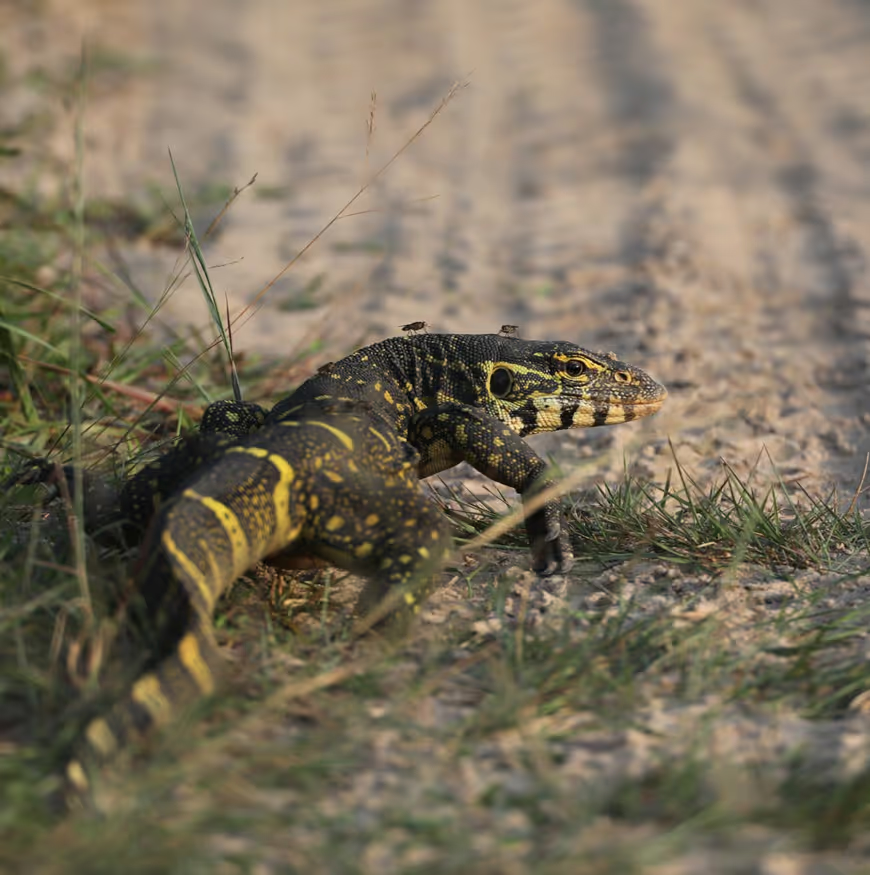Species Identification Software
Automatically Identify Animals From Images, Audio, or eDNA With AI-Powered Species Identification Software
Our AI-powered species identification software transforms raw ecological observations into verified species data insights. From wildlife cameras, acoustic sensors, to environmental DNA, our automated species ID engine merges all your data sources to reduce manual workload, increase confidence, and support compliance or conservation decisions.
Trusted by Leading Organisations Around the World













































Automatically Detect and Classify Animal Species Using AI-Powered Species Identification Tools
Dealing with thousands of images, audio recordings or eDNA samples can overload any ecological team. Our species identification software automates recognition, drastically reducing manual effort while maintaining scientific reliability. Simply upload your datasets, and the system automatically detects and classifies species across modalities, producing species-level outputs ready to feed into your monitoring, reporting, or decision workflows.
Detect species from images, audio or genetic data with one unified tool.
Efficiently analyse large volumes of data without manual bottlenecks.
When species-level certainty is low, default to genus or family level to reduce misclassification.
Validate Your Species Identification Outputs with Expert Review
Even the strongest AI models face uncertainty, especially when data is ambiguous. Our software highlights identifications with low confidence and pushes them into a review loop, routing them to an expert for confirmation, correction or rejection. Experts can intervene, correct errors, or add context. That way, your species-level outputs remain precise, auditable and ready for downstream use.
Each species identification comes with a probability rating so you know which results to trust.
Low-certainty identifications are surfaced automatically for expert inspectors to confirm or override.
Every validation step is logged and linked to raw observations and metadata.
Consolidate All Species Identification Data From Different Monitoring Methods in One Dashboard
Your ecological datasets might come from different monitoring methods. Our species identification software ensures those detections don’t live in siloes. Once each method produces species outputs, the system can organise them into a coherent, unified dataset. Conflicting identifications get flagged, aligned, or merged so your final species dataset is consistent, robust, and ready for reporting.
Bring together species identifications from all monitoring types and methods.
Automatically detect, prioritise or flag disagreements between sources.
Produce consolidated species outputs with uniform taxonomies and confidence scores.
.avif)
Turn Validated Data Into Audit-Ready Species Identification Reports For Stakeholders
A species list alone is not enough. After identification, review and integration, your team needs outputs that can drive decisions. Our species identification software generates audit-ready reports, designed to slot into your planning, reporting or conservation workflows. Ready to share, export and embed in compliance documentation, scientific summaries or stakeholder visuals.
Download species outputs as CSV, JSON, shapefile or GIS-compatible layers.
Generate species summary reports with trends, distributions and presence/absence metrics.
Display species results in interactive charts, maps and trend views that update automatically.
Analyse All Your Species Data in One Place
From images to acoustic recordings to eDNA samples, our species identification software allows you to merge every monitoring method into one integrated dashboard, helping you detect, identify and report species data with confidence.
Overlay species identifications with habitat maps, land cover or environmental gradients from satellite layers to give spatial context to detected taxa.
Public Datasets
Pull in species occurrence records from public data sources to validate, enrich or compare your own identifications within the same dashboard.
View species identifications from audio recordings right alongside your image or eDNA detections, and compare acoustic signatures with other modalities.
Species Identification Dashboard Integrations
Display species identified from your camera trap imagery, with bounding boxes, timestamps and locations, integrated into your full species dashboard.
Merge eDNA-based species detections into your dashboard. Link DNA reads to species assignments and see how they align with other methods.
Field Observations
Include human-collected species observations (photos, notes, audio) in the dashboard to complement automated detections and ground-truth your data.
Streamline Your Species Identification Workflow in Four Simple Steps
Use a streamlined workflow to turn your images, audio files, or eDNA reads into validated, integrated species outputs. Our species identification software makes the process intuitive and reliable, ensuring your data outputs are accurate, unified, and ready for action.
1.
Upload & Tag Observations
Add your image, audio or DNA files along with metadata (location, date, device). The software automatically organises them for processing.
2.
Automated Species Classification
The AI engine processes your data, assigning species labels where possible and flagging low-confidence cases.
3.
Review & Validate Output
Experts or users examine flagged cases, correct or confirm identifications. Every change is logged for auditability.
4.
Integrate, Report & Export
Final species data is merged across methods, visualised in dashboards, and exported in formats suitable for reporting, GIS or further analysis.
Species Identification Solutions Tailored For Your Industry & Sector
Different sectors face unique species data challenges, from compliance, to monitoring, restoration, and research. Our species identification software fits into each sector’s workflow, converting raw images, audio, and DNA into verified species outputs that support decision-making, regulatory reporting, and ecological strategy.
Our Nature Monitoring Solutions Drive Compliance And Conservation At Scale
From tropical forests to private estates, our platform is used worldwide to deliver measurable results. Explore our case studies on the interactive map to see how organisations are turning nature data into compliance, conservation and restoration outcomes.
National EUDR compliance in Benin & Togo
EUDR compliance for 50,000 soya farms across Togo and Benin

Carbon & Biodiversity Gap Analysis for Gemstone Mining
FURA is a global gemstone mining company operating in Australia, Colombia, and Mozambique.

Biodiversity Credits and Data Validation for ERA Brazil
Camera trap videos of individually identified jaguars can support biodiversity credit projects

Scalable Camera Trap Data Analytics
Scalable AI species identification in the Republic of Congo

Biodiversity Baseline for a Scottish Estate
Scaling the use of bioacoustics, eDNA and camera traps for biodiversity monitoring in Scotland

Peer-reviewed studies validating our methods and demonstrating scientific credibility.
Projects delivered across Africa, Asia, Europe and the Americas with measurable outcomes.
Agricultural sites assessed for deforestation risks and sustainability reporting under EUDR.
Client Feedback
Organisations across the world use Okala to simplify biodiversity monitoring, accelerate compliance reporting, and deliver measurable ecological impact. Here’s what they say about working with us.
Species Identification FAQs
Still have questions about how our biodiversity monitoring software works? Discover how we help organisations turn complex ecological data into clear, actionable insights.
Book A Demo Today To See Our Species Identification Software in Action
From automated species identification to confidence-verified outputs, our species identification software helps you transform biological observations into clear, auditable species reports. Book a personalised demo today to see how it can speed up your projects, lower your costs, and enhance trust in your ecological data.




























.avif)
.avif)
.avif)

.png)











